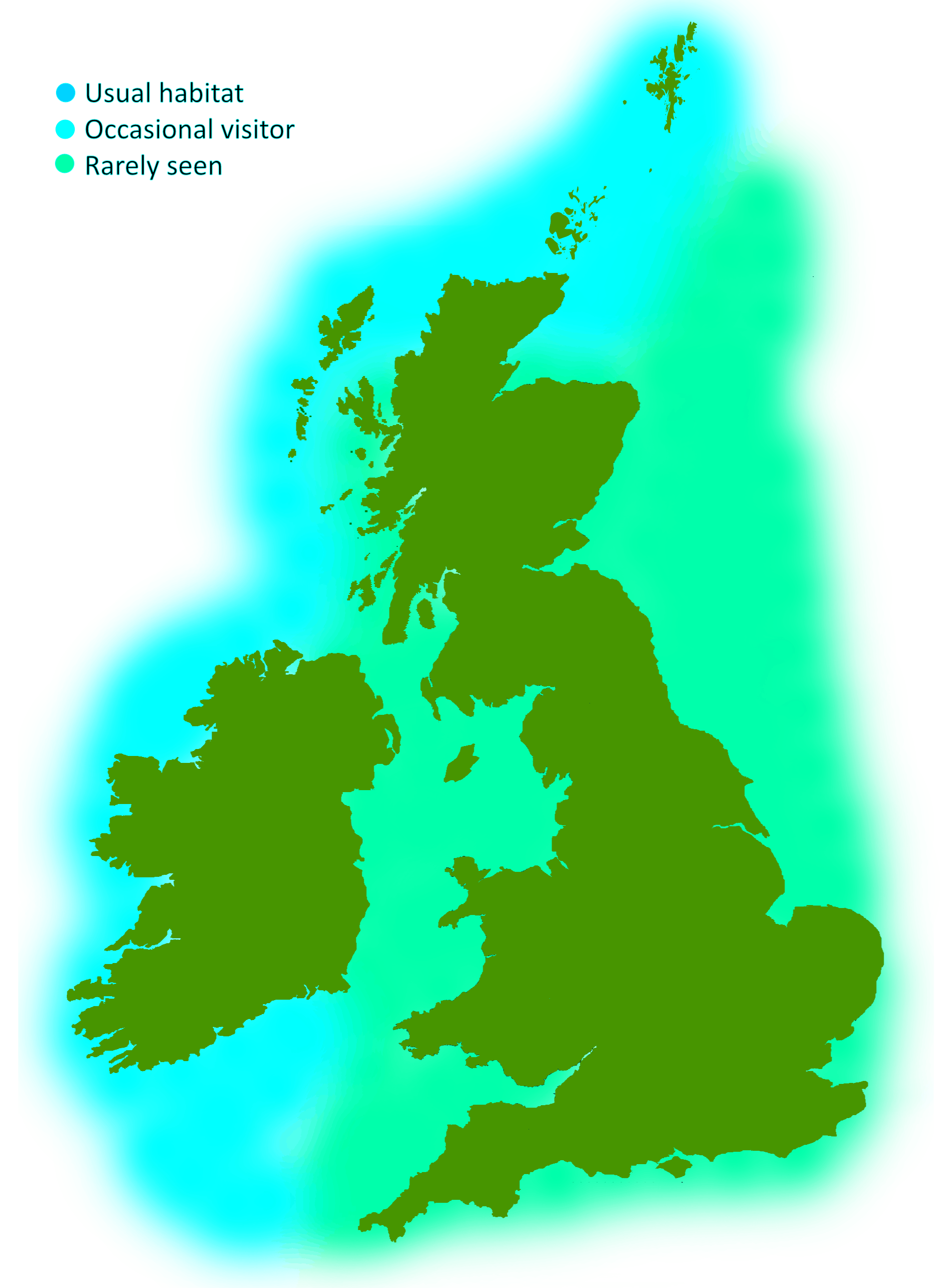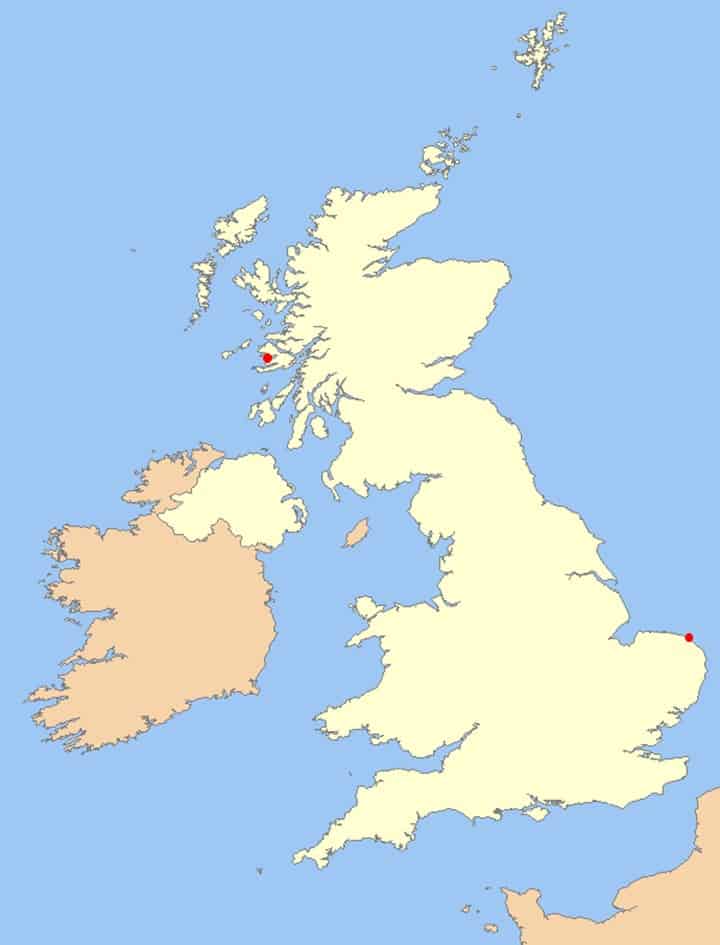
A pelagic species measuring up to 7 metres. Body colour varies from tan, pale brown to blue-grey or purplish-black in young animals. Calves are born dark at 2-3 metres long, reaching sexual maturity at 7-11 years old and 5.5-6.1 metres long.
Older males are almost white in front of the dorsal fin and have two small teeth at the tip of the mouth. Females do not have teeth or linear scars. Cuvier’s heads become creamy-white with age and have a distinct ‘squashed’ shape with the lower jaw protruding forward of the upper jaw like a goose-beak. They capture their prey by suction feeding, using the throat grooves to quickly expand the oral cavity to suck prey into their mouths.
The small dorsal fin is in the last third of the body. All beaked whales lack the median notch between the left and right tail flukes.
Cuvier’s beaked whales live far offshore, favouring the edge of the continental shelf and deep water. They can dive to over 2000m on a single breath in search of they main prey, squid.
Around the UK and Ireland they may occasionally be seen in our offshore waters from boats along the Atlantic seaboard. It would be very unusual to see them from land.

Live strandings of Cuvier’s beaked whales are very rare. If found alive it is almost certain that their health will already be severely compromised and unsuitable for refloatation. This is especially true of animals entering the North Sea, where they are a very long way out of their normal habitat, will be unable to forage effectively and unlikely to find their way back out.

A whale, dolphin or porpoise stranded on the beach is obviously not a usual phenomenon. These animals do not beach themselves under normal circumstances, and they will require assistance. Please DO NOT return them to the sea as they may need treatment and or a period of recovery before they are fit enough to swim strongly.
BDMLR RESCUE HOTLINE:
01825 765546 (24hr)
or
RSPCA hotline (England & Wales): 0300 1234 999
SSPCA hotline (Scotland): 03000 999 999
You will receive further advice over the phone, but important things you can do to help are:
If you find a dead cetacean
The Cetacean Strandings Investigation Programme (CSIP) collects a wide range of data on each stranding found on English and Welsh shores, whilst the Scottish Marine Animal Strandings Scheme (SMASS) does the same for Scotland. If you discover a dead animal, please contact the relevant hotline and give a description of the following where possible:
Digital images are extremely helpful to identify to species, as well as ascertaining whether the body may be suitable for post-mortem examination.
CSIP has produced a useful leaflet that can be downloaded by clicking here.
CSIP hotline (England and Wales): 0800 6520333.
SMASS hotline (Scotland): 07979245893.